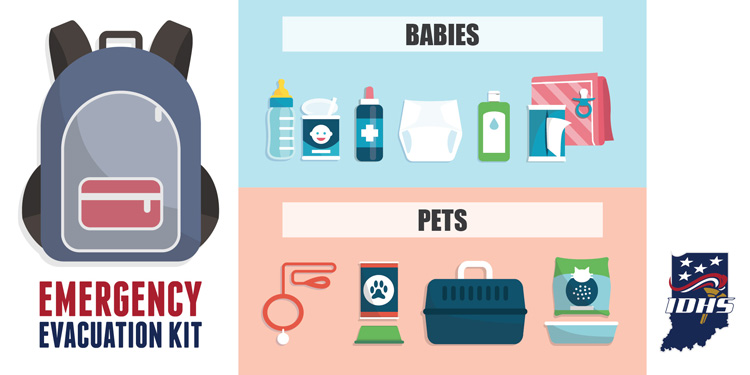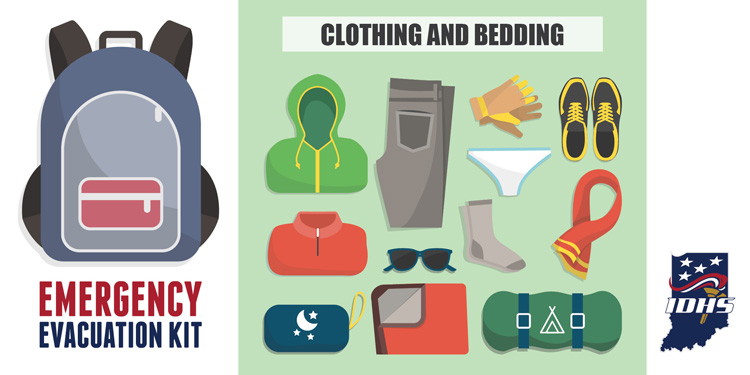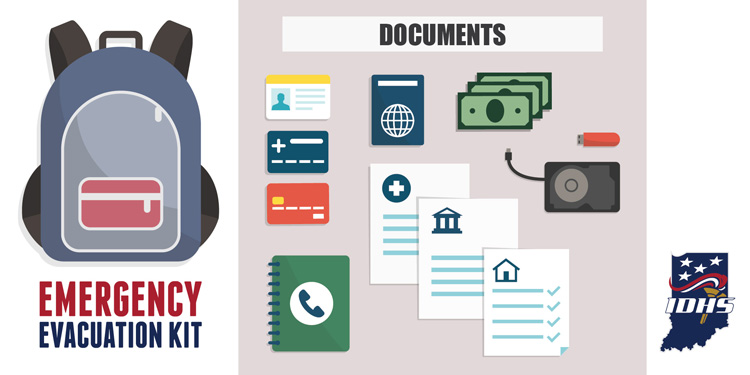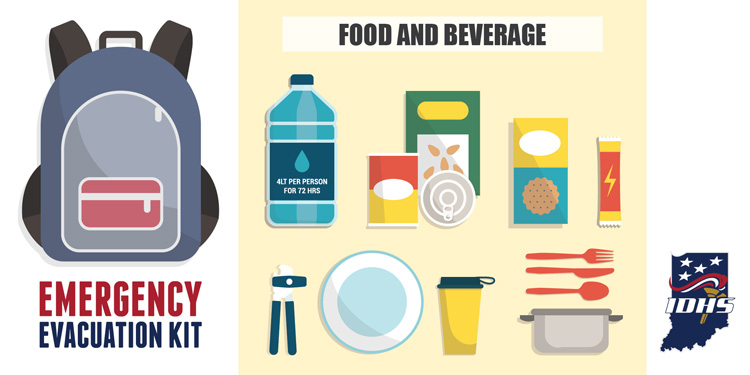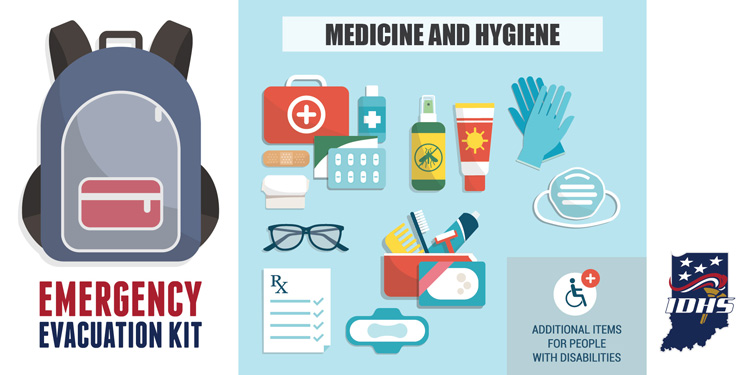Disaster Kits
- Get Prepared
- Emergencies
- Current: Disaster Kits
You need a family disaster kit. This is a supply kit that will help you and your family survive until emergency personnel are able to reach you. Disaster kits are tailored to your family. They take into account the people living in your house.
The Indiana Department of Homeland Security wants you prepared for any disaster that might take place. Take action now to help yourself and your family be more prepared for any emergency. It may take emergency personnel up to three days to reach you; therefore, create disaster kits that are designed for three days. Each kit should include basic items like water, food, a flashlight, a battery-powered radio and a first aid kit.
Disaster Kit Tips
Quick Tips
- Have at least three gallons of water stored for each person in the household.
- Pack at least three days' worth of non-perishable food.
- Create a first aid kit.
- Include tools, supplies and clothing to last for several days.
- Keep in mind that there may be no electricity during an emergency or disaster, so assemble items that do not require electricity.
Water
One gallon of water per person per day. This is both for drinking and sanitary purposes.
- For three days, one person needs at least three gallons of water.
- Store in clean plastic containers.
- The hotter the weather is, the more water you may need.
- Children, nursing mothers and people who are sick or injured may need more water.
Food
Three-day supply of non-perishable food. Make sure to store foods that require no preparation, no refrigeration and very little water, if any.
Examples
- Protein bars
- Canned meats
- Dry cereal
- Dry milk
- Peanut butter
- Baby formula (if applicable)
- Crackers
First Aid Kit
Include the following:
- Latex gloves
- Scissors
- Tweezers
- Petroleum jelly
- Sterile dressings
- Adhesive bandages
- Thermometer
- Soap or hydrogen peroxide
- Antibiotic ointment
- Sunscreen
- Prescription medication and supplies
- Over-the-counter pain reliever
- Anti-diarrhea medication
- Antacid
- Laxatives
Other Needed Items
Consider adding the following items to your disaster kit. Remember that there may be no electricity during disasters, so prepare supplies that can work when no electricity is available.
- Wrench to shut off gas and water
- Can opener (manual, not powered)
- Eating utensils
- Paper cups, plates and towels
- Flashlight and extra batteries (no candles: open flames could cause an explosion if there is a gas leak)
- Battery-powered or hand-crank radio (NOAA weather radio preferably)
- Local maps
- Dust mask
- Plastic sheeting
- Duct tape
- Garbage bags
- Fire extinguisher
- Matches in a waterproof case
- Blanket
- Important documents in waterproof container (birth certificates, Social Security card, deed, bonds, etc.)
- Cash (keep small bills because no power means there will be no ATM availability or credit card use)
- Clothes (strong shoes, long-sleeve shirt, jeans, extra socks)
- Entertainment for kids (if applicable)
- Extra baby supplies (if applicable)

